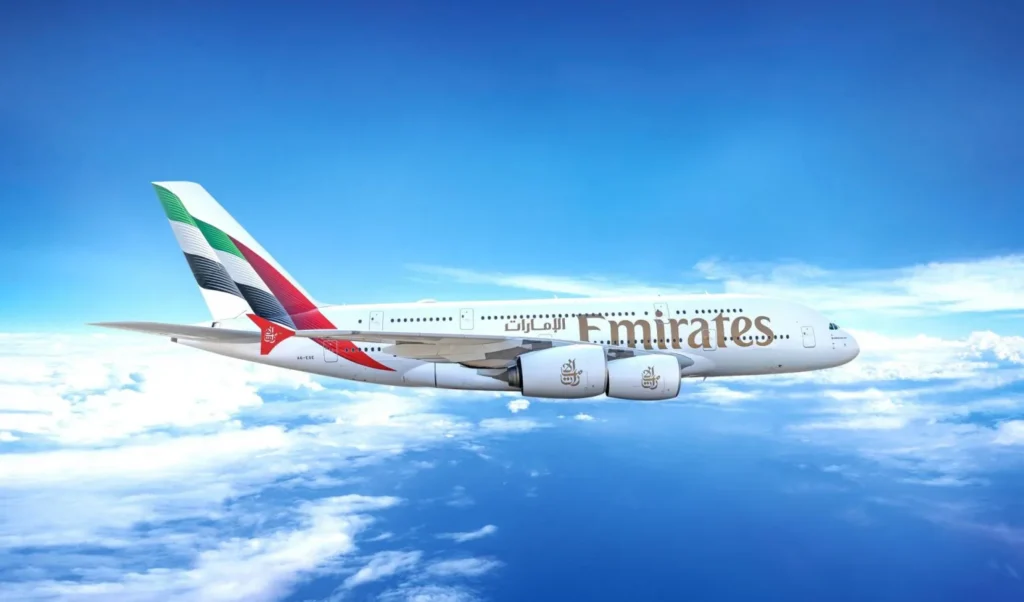From October 1, 2025, Emirates new safety rules come into effect, introducing significant changes for passengers. The most notable update is a ban on using power banks during flights, a move designed to strengthen safety on board. For many frequent travelers, this may come as a surprise, especially for those who depend on portable chargers to keep devices alive during long journeys. This article explains the new regulations, the reasons behind them, their impact on travelers, and how to adapt without disruption.
Why Emirates is introducing new safety rules
Power banks have become an essential part of modern travel. They are compact, convenient, and help travelers stay connected by charging phones, laptops, and other devices. However, despite their convenience, these portable batteries carry risks. Most power banks use lithium ion cells, which, under certain conditions, can overheat or malfunction. In rare cases, such failures can cause fires or explosions.
Airplanes, with their confined spaces and limited emergency response options, are especially sensitive environments. Even a small fire can escalate quickly. Emirates, prioritizing the safety of its passengers and crew, has therefore chosen to adopt stricter rules regarding how power banks are handled in the cabin.

The airline emphasizes that passengers will not be left without charging options, as its aircraft are already equipped with in seat power outlets and USB charging ports. The new policy aims to prevent unnecessary risks without sacrificing passenger comfort.
What the new rules say
The new regulations provide detailed guidance for passengers. Here is a breakdown of what travelers can and cannot do starting October 1:

How many power banks are allowed and their size
- Each passenger is permitted to carry one power bank only.
- The device must have a maximum capacity of under 100 watt hours.
- The capacity must be clearly labeled on the power bank. Units without visible markings may be restricted.
Prohibitions on use and charging
- Passengers will not be allowed to use a power bank to charge their devices during the flight.
- Power banks themselves cannot be charged using the aircraft’s power supply.
- Attempting to use or recharge a power bank mid flight may lead to warnings from the cabin crew or confiscation.
Storage requirements
- Power banks must be stored in accessible locations such as the seat pocket or under the seat in front.
- Storing power banks in overhead bins is not permitted.
- They remain strictly banned from checked baggage, as before.
What this means for passengers
For everyday travelers, these rules may require some adjustments in routine. Here are the key changes passengers should prepare for:
Precharge your devices
Since power banks can no longer be used mid flight, it is more important than ever to charge phones, tablets, laptops, and other electronics fully before boarding. This is especially true for long journeys where devices are heavily used for entertainment or work.
Choose the right power bank
Only one power bank per passenger is allowed, and it must have a capacity below 100 watt hours. Travelers should check their power bank specifications in advance. Carrying uncertified or oversized units could result in delays at security or during boarding.
Store it properly
Power banks need to be kept where cabin crew can access them quickly in case of an emergency. Stowing them in overhead compartments is no longer allowed. This change is meant to ensure quick response in case of overheating.
Use in seat power outlets
Most Emirates aircraft already provide USB ports or AC outlets at every seat. Passengers should plan to rely on these in flight power sources rather than personal chargers.
Plan ahead for long flights
Business travelers or digital nomads may find this rule inconvenient at first. To adapt, they can bring fully charged laptops, carry extra cables for in seat outlets, and minimize unnecessary device use to conserve battery.

Why these rules matter
Lithium ion batteries are efficient and lightweight, but they are not without risks. If damaged, poorly manufactured, or improperly charged, they can enter a state called thermal runaway. In this condition, the battery rapidly heats up, sometimes causing fire or smoke.
While such incidents are rare, the stakes on an aircraft are extremely high. Containing a small battery fire inside a cabin can be challenging, and smoke can quickly disrupt passengers and crew. By preventing in flight charging of power banks, Emirates reduces the chances of such malfunctions.
Another reason for requiring passengers to store power banks in easily reachable areas is safety. If something does go wrong, crew members need immediate access to remove or isolate the device before the situation escalates.
These measures may feel restrictive, but they are designed to create a safer environment for everyone on board.
How this compares to other airlines
Emirates is not the only airline tightening rules around portable batteries. Over the past year, several international carriers have announced similar restrictions, either banning the in flight use of power banks or placing strict controls on their storage and capacity.
This trend reflects the growing focus within the aviation industry on minimizing risks associated with lithium batteries. Aviation authorities worldwide are encouraging airlines to adopt stricter policies as incidents related to batteries have been rising globally.
For Emirates, aligning with these international standards reinforces its reputation as a safety first airline while ensuring consistency for passengers who fly across multiple carriers.
Frequently asked questions
Can I still bring a power bank on board?
Yes, but only one power bank per passenger is allowed, with a maximum capacity of 100 watt hours.
Can I use it before the flight or after landing?
The ban applies only during the flight. Passengers are free to use their power banks in airports or once they have landed.
What if my power bank does not have the capacity clearly labeled?
If the capacity is not visible, the airline may restrict you from carrying it. Always travel with devices that have clear markings.
Can I charge my power bank using the plane’s power outlet?
No. Charging power banks in flight is strictly prohibited.
Will my power bank be confiscated if I use it by mistake?
Cabin crew will first instruct passengers to stop. However, repeated violations may result in the device being confiscated or stored safely until landing.
Are there exceptions for medical devices?
The rule specifically targets standalone power banks. If batteries are built into approved medical devices, normal device carriage rules apply.
Does this rule apply to all Emirates flights?
Yes. The policy is effective across the entire Emirates fleet, regardless of flight duration or destination.

Practical tips for travelers
To adapt smoothly to the new rules, here are some practical steps passengers can take:
- Charge devices fully before travel to reduce reliance on external power.
- Use the aircraft’s built in charging ports for phones and laptops.
- Carry necessary cables such as USB C or Lightning to connect directly.
- Check the power bank label to ensure it meets the 100 watt hour limit.
- Invest in certified products with proper safety features.
- Store the power bank correctly in the seat pocket or under the seat.
- Conserve battery by reducing screen brightness or disabling non essential apps during flight.
Final thoughts
The introduction of Emirates new safety rules marks a significant shift in how passengers travel with their personal electronics. While it may initially feel inconvenient for those who rely heavily on power banks, the move prioritizes the collective safety of everyone on board.
By prohibiting in flight use and charging of portable batteries, Emirates is reducing potential hazards while still ensuring passengers have access to power through in seat outlets. For travelers, the adjustment is straightforward: bring a compliant power bank if needed, keep devices charged before boarding, and rely on the aircraft’s systems for power during the journey.
Ultimately, these changes reflect a global trend in aviation toward stricter oversight of battery powered devices. Passengers who understand and prepare for the new rules will find their journeys smoother and safer. As the airline industry evolves, safety remains the number one priority and these rules are a reminder that even small adjustments can make a big difference in protecting lives at 35,000 feet.
Do follow UAE Stories on Instagram
Read Next – Air Arabia Airbus A320neo Delivery Boosts Fleet to 84 Aircraft














